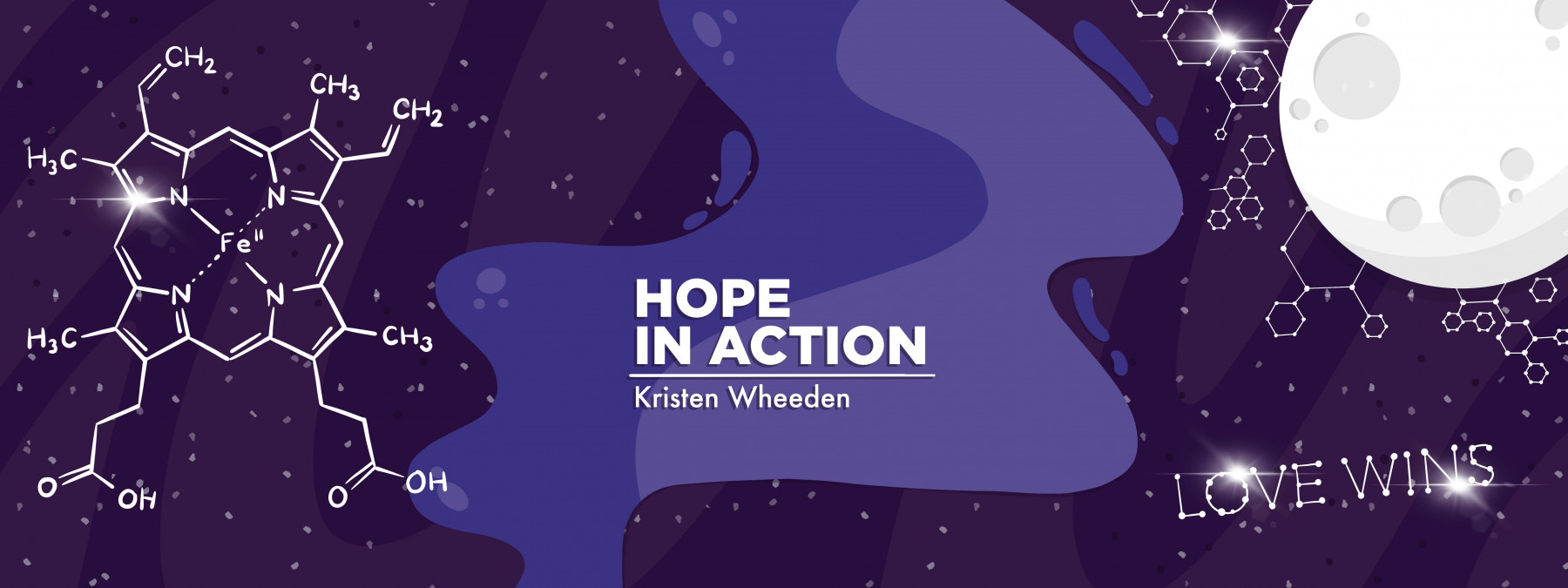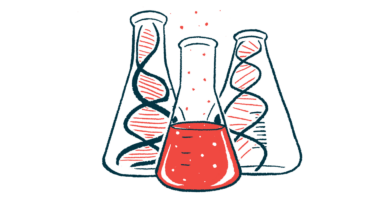How one woman with AIP is turning hope into action
Kalyn Shelton's new memoir highlights the impact of storytelling, advocacy

“Hope in Action,” the name of this column, stems from a motivating quote I heard early in my advocacy.
My son Brady had recently been diagnosed with erythropoietic protoporphyria, a rare disease that impairs his ability to tolerate sun exposure. Hungry for information, I attended a seminar at the National Institutes of Health, right down the road from our home. A presenter shared that wanting awareness, research, or someday even a cure is a valid desire, but “hope is ineffective without action.”
That statement drove me to become an advocate. In this role, I feel blessed to come across so many others who are turning hope into action.
Recently, I met a true inspiration in Kalyn Shelton, a young woman who lives with acute intermittent porphyria (AIP). Her new self-published memoir, “I’m Not Always Me: Living with Porphyria,” vividly demonstrates how her rare disease took control over her body and personality. Kalyn hoped to share her experience with AIP so that other patients would feel less alone.
The power of storytelling
Porphyrias are a group of rare genetic disorders characterized by problems with the production of heme, a component of hemoglobin that’s necessary for oxygen transport in the body. AIP is a type of acute hepatic porphyria, which can cause severe abdominal pain, vomiting, neuropathy, and mental changes, among other symptoms. These acute attacks can be life-threatening and require prompt medical attention.
Kalyn’s journey is full of the highs and lows that come with living with porphyria. Before her diagnosis, Kalyn described herself as happy, energetic, and goofy. However, frequent debilitating attacks caused widespread pain and left her feeling angry, confused, and generally disappointed in herself. She writes, “Everything inside of me was going to war against itself, and my body was its battleground.”
From a young age, Kalyn experienced symptoms that were both baffling and challenging. Her proactive efforts to learn about her condition allowed her to transform her trials into a campaign for greater awareness. She shares that this journey wasn’t a solo endeavor; it was a team effort headed by her dedicated husband, Daniel, who engaged expert healthcare professionals in her care.
As Kalyn and I discussed her experience and book, we learned that I was part of a pivotal moment in her care several years ago. In my advocacy role, I fielded a call from Daniel and referred Kalyn to a porphyria expert, Dr. Herbert Bonkovsky, and his team in Winston-Salem, North Carolina. This reference wasn’t just a turning point for Kalyn’s health, but also a shining example of advocacy in action. The connection was made possible through our network of dedicated patients, advocates, and healthcare professionals.
Kalyn’s decision to pen her memoir wasn’t merely about sharing her story, but also about educating and empowering others. This act of storytelling was cathartic for Kalyn, allowing her to process and articulate her experiences, and ultimately helping her to feel a sense of control over her condition.
Her memoir serves as a light for those who might feel isolated by rare disease, offering them a narrative that may resonate with their experiences and provides practical insights into managing life with a chronic illness. Kalyn beautifully articulates the unpredictability of porphyria: “Will I be okay? Just like life, porphyria will pop up and get my attention at any second. No warning, no knock, it just barges right in and makes itself at home.”
The theme of storytelling was intertwined with this year’s Global Porphyria Day, celebrated on May 18. The #MyPorphyria campaign encouraged people to share their experiences, fostering a sense of community and mutual support. Kalyn embraced this theme by self-publishing her book, demonstrating the powerful impact of personal storytelling.
Kalyn’s story underscores the importance of taking action. Her narrative concludes on a note of empowerment, driven by her advocacy and her community’s unwavering support. She also highlights that while she lives with porphyria, she’s not defined by it.
Kalyn reminds us that hope alone is not enough. It’s through the concerted efforts of individuals and communities, through action and advocacy, that we can truly make a difference. Her memoir is a brave and vulnerable call to action for all of us to strive for greater awareness, better treatments, and a more supportive rare disease network.
As president of the United Porphyrias Association, I invite you to join us at 1 p.m. ET on June 15 for a virtual discussion of Kalyn’s memoir, where we’ll explore themes like the patient experience, loss of self, storytelling, and advocacy. To join the upcoming discussion, please email [email protected].
Through advocacy and action, we can transform our hope into tangible change. As Kalyn writes, “At some point, I will be able to relax and feel like the same me again.” Her experience demonstrates that telling your story can be a powerful, cathartic experience that not only helps you, but also inspires and empowers others on similar journeys. Indeed, she proudly declares, “I am a blessed porphyria warrior!”
Note: Porphyria News is strictly a news and information website about the disease. It does not provide medical advice, diagnosis, or treatment. This content is not intended to be a substitute for professional medical advice, diagnosis, or treatment. Always seek the advice of your physician or other qualified health provider with any questions you may have regarding a medical condition. Never disregard professional medical advice or delay in seeking it because of something you have read on this website. The opinions expressed in this column are not those of Porphyria News or its parent company, Bionews, and are intended to spark discussion about issues pertaining to porphyria.








Comments
Ferrucci Sabine
Bonjour,
J’ai la PAI depuis 2001, j’ai 60 ans ,et j’ai été traitée par Normosang puis GIVOSIRAN
Je ne souffre plus de crise et mon état s’est amélioré considérablement .
Il y a toujours des moments de fatigue, de douleur d’effets secondaires etc ….
Je suis donc toujours très curieuse des avancées, des conseils .
J’habite en France t
Je souhaite être informée de tout ce qui est possible ,
Effets indésirables aussi …
Bref, merci de me donner des informations au sujet de la PAI
ET COURAGE À TOUS !